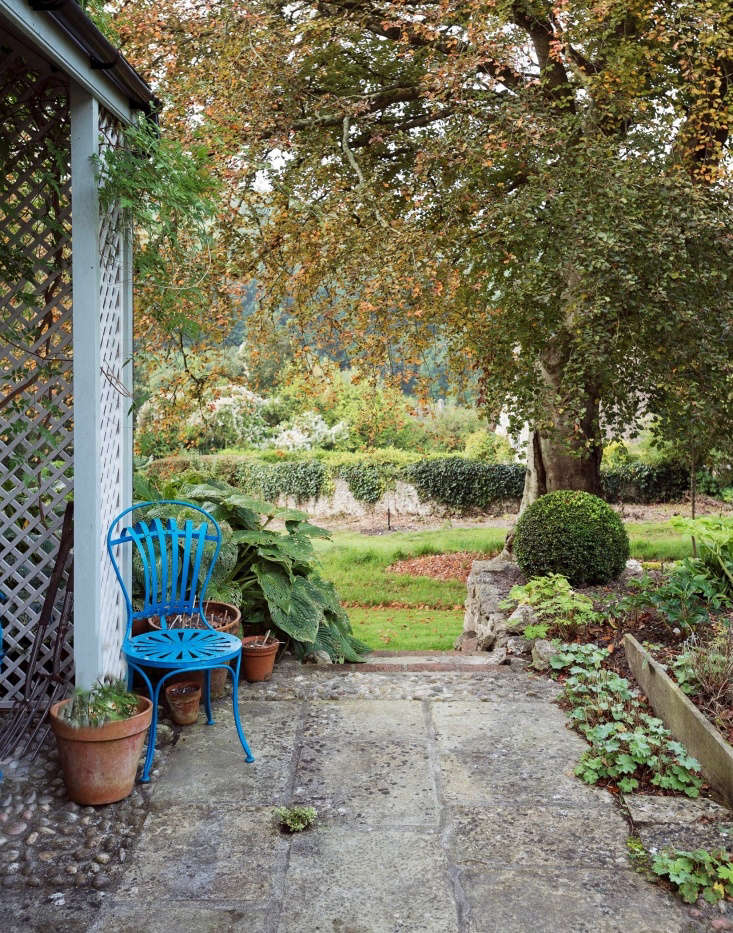Are you designing your first garden? Or rehabbing an outdoor space you inherited when you bought a house? Good for you. Gardens make our lives better: they improve air quality, invite us into the sun and shade, shelter us from wind and rain, and soothe us with visually relaxing natural tones of green and brown.
But when you are designing a landscape, where do you start? We rounded up suggestions from landscape architects and designers, as well as a few based on our own experience. Follow these ten tips for landscape design and you will be on your way:
Photography by Matthew Williams for Gardenista.
1. Learn the difference between Eastern and Western design traditions.
“The history of landscape design is simple and clear,” wrote the influential 20th-century American landscape architect Garrett Eckbo in Landscape for Living. “It has two basic streams, the formal axial tradition of Europe and western Asia, and the stylized nature-symbolism of eastern Asia.”

Do you want the layout of your garden be based on western traditions— with straight lines, rectangles, and symmetry—or based on the eastern tradition of irregular shapes, curves, and materials such as water, rocks, and gravel to symbolize the natural world? Once you understand the principles, you will have the confidence to bend the rules and mix elements from both.
2. Know the purpose of your garden.

Historically, all gardens were design with one of three goals in mind, wrote landscape architect Eckbo: to raise food, to create living space, or to be visually pleasing.
Ask yourself: What purpose do you want your garden to accomplish? With the answer in mind, you can design a space that does double duty, mixing ornamentals and edibles in a single planting bed, for instance.
3. Visually define the boundaries of your garden.

When you define the boundaries of a space, you give the eye something to focus on—a hedge or a fence in the distance. Clarifying where the perimeters are creates a sense of order.
4. Know the idiosyncrasies of your property.

Every piece of land has its own distinct set of features: sunny areas, shade, changes in elevation, windy spots, existing trees, mature shrubs, and soil conditions that may not match your neighbor’s.
Get to know your property’s microclimates and topography. Test your soil to see if it’s acidic and study its composition: is it sandy and loose or heavy and clayish? The more you know about the personality of your property, the better advantage you can take of its best traits.
5. Take advantage of borrowed views.

Don’t be shy about capitalizing on the loveliness that surrounds your land. Does your neighbor have a magnificent tree that turns bright red in autumn? Incorporate borrowed beauty into your own landscape to make your garden feel more expansive; don’t block the view with a high fence.
6. Choose foundation plantings that anchor the house.

Tie the house (and other buildings, such as a freestanding garage or a garden shed) to the land by planting shrubs at the base of a foundation. You also can train vines to grow on walls. Both the house and the garden will benefit if it’s clear they belong to each other.
7. Choose the right dimensions for a path or walkway.

You can lay out a path that’s as narrow as 18 inches in a tight pace. But the wider the path, the more spacious the garden will feel. A 48-inch-wide path (if you have the space) will allow two people to walk side by side. You also can experiment: lay out a path that narrows and widens or add a curve to create visual interest.
8. Site a patio based on how you will use the space.

Do you want to use your patio as an outdoor dining room? Make sure it’s convenient to your kitchen. Do you want a secluded spot to sit and read a book? Site a patio at the edge of the garden and plant a hedge around it to turn it into a secret.
9. Choose plants that will thrive in your micro-climate.

What plants will be happiest in your garden? Native plants are an obvious choice. Also plants that you notice are happy in your neighbors’ gardens. Remember that your own garden has microclimates of sun and shade, and site plants accordingly.
10. Plant for a tree’s future.

When planting a tree, consider the size and shape it will be at maturity. The saddest thing in a garden is a tree with branches hacked off because it got too big for its location. Give a tree plenty of space to grow as high and wide as it wants and you (and future generations) will end up with a beautiful specimen.
N.B.: Are you looking for more garden design advice? See our recent posts:
- 10 Things Your Landscape Architect Wishes You Knew (But Is Too Polite to Tell You).
- Landscaping Ideas: 10 Ways to Save Money During a Garden Remodel.
- 10 Things Your Garden Designer Wishes You Knew About Gravel.












Have a Question or Comment About This Post?
Join the conversation (5)